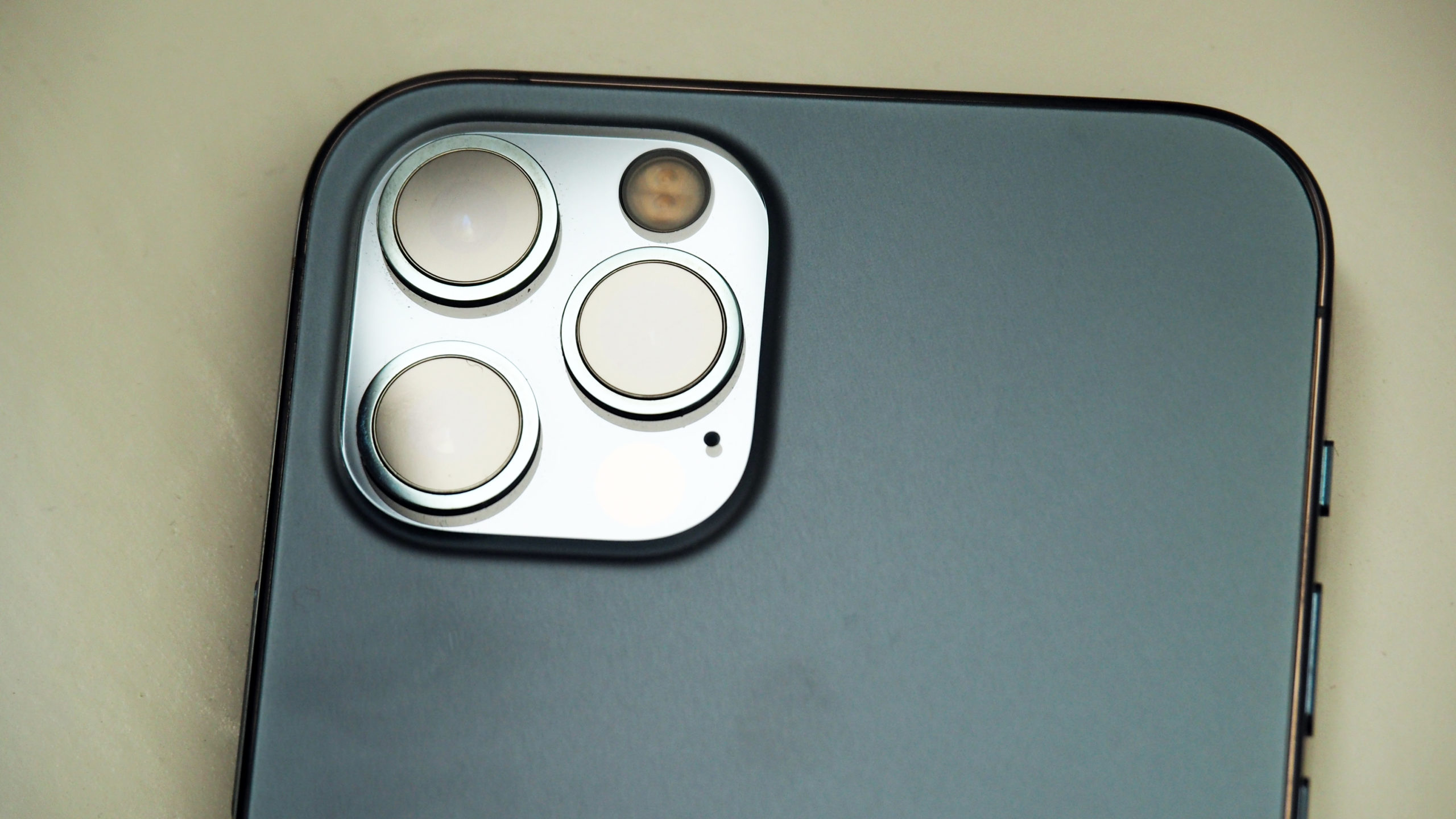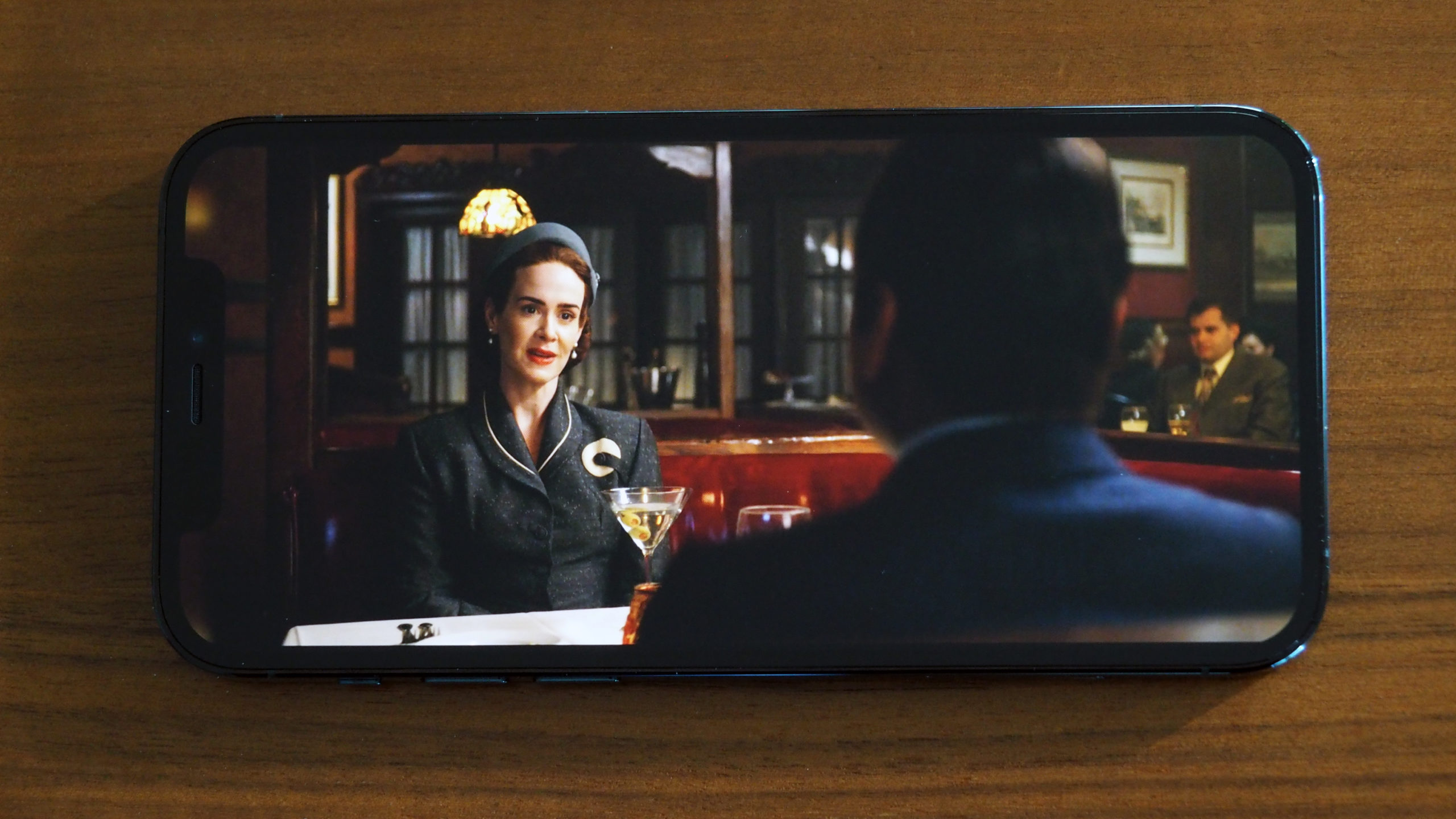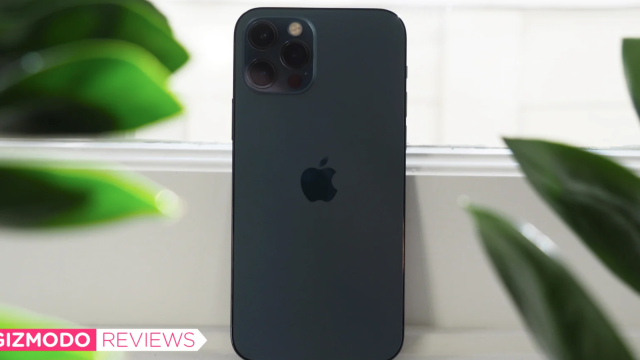Phones are expensive. Most people upgrade every few generations, and they want a phone that will take great photos, support the latest software, and won’t shit the bed after just a couple years.
The iPhone 12 Pro is $1,699. I wish flagship phones were cheaper, but for the price, the 12 Pro is future-proofed for years to come, with 5G connectivity that will enable much faster speeds — even if it’s not constantly pulling down gigabit speeds right now — an incredibly powerful processor, excellent cameras, and a goddamn gorgeous design.
The iPhone 12 Pro has a lot of competition. Samsung makes excellent hardware, but its software and image processing can be wonky, and the company’s pricing is all over the place. Samsung’s $1,499 Galaxy Note 20 has a stylus but [checks notes] a plastic back. Come on. The $1,499 Galaxy S20 feels a little higher-end, but you have to buy a different variation if you want support for 5G. Meanwhile, Google’s hardware is weird as hell. The new Pixel 5 is $999 but should cost much less, because it feels and looks cheap, even with a more modern hole-punch front-facing camera. I get that the iPhone notch is still polarising, but I accept that as a trade-off for more secure facial recognition. Google’s software is overall good, but its cameras are no longer pulling their weight.
Yet the 12 Pro’s biggest rival isn’t anything Android-based. It’s the $1,349 iPhone 12, which has most of the same features for $300 less. Is it worth shelling out the extra cash for a better camera and more premium design? This could be contentious in this climate, but yes. Yes, it is.

iPhone 12 Pro
What is it?
Apple's flagship iPhone
Price
$1,699
Like
Just plain gorgeous design, especially in Pacific Blue; triple-lens camera is up there with other flagships, especially with Night Portraits; powerful performance; fast 5G speeds (where you can find them)
Don't like
Apple should have packed the same Pro Max camera specs in the smaller Pro for those of us who do not want gigantic phones
Here’s where I have to say: If you read the headline and clicked just to immediately scroll down to the comments and tell me which phone is better than this one, hold your horses. If you hate iOS, the iPhone 12 Pro will not convince you otherwise. If you have a newish iPhone (say, the 11 Pro), there’s no need to drop everything and upgrade. But if you are cool with the Apple ecosystem and have an older iPhone — say a 7 or 8 — I highly recommend the iPhone 12 Pro. It is worth the money.
“But wait,” you might be thinking, “What about the 12 Pro Max? Won’t that be a more perfect iPhone than this iPhone?”
Possibly! The Pro Max does have better camera specs, but I haven’t used it yet. For me personally, as a petite person with small hands, the iPhone Max tends to be uncomfortably tall to use one-handed and does not fit in any of my pockets, but I will render my verdict when the Max debuts next month. If you prefer a larger phone, you might want to wait. I don’t know your life! But I do know that most people will love the 12 Pro.
Let’s start with the design: The 12 Pro shares the same flat-edged, iPhone 4-like aesthetic as the iPhone 12, which evokes nostalgia for days when new smartphones were extremely exciting. The 12 Pro has a stainless steel frame that makes it much heavier than the aluminium 12, and also has a matte glass back that is fairly resistant to fingerprint smudges. (The 12, bless its heart, is incredibly glossy.) The Pacific Blue shade I’ve been using is subtle and really, really beautiful — so nice that I want to use it sans case, but I won’t, because I know my limitations. Apple included a more shatter-resistant Ceramic Shield front glass throughout the iPhone 12 lineup, but I’m not out here trying to live dangerously. The 6.1-inch Retina XDR (OLED) display is beautiful, and while I was concerned that the bigger screen size would translate to a larger phone footprint, this year’s Pro is the same size as last year’s.
Then there are the cameras, which improve upon the base iPhone 12’s with a telephoto lens and LiDAR scanner. More on that in a second.

Some iPhone reviewers have remarked on the futility of upgrading your smartphone camera when everyone is stuck inside due to the pandemic. I hate to be the one to say it, but, uh, people are no longer staying inside. Many of us are still working from home, but my scientific analysis of Instagram tells me that outdoor dining is in full swing, kids across the country are back in school, and people are getting ready for the holidays. We are all just trying to live our lives in this truly horrible timeline, and we want good cameras to capture the few joyful memories 2020 may bring. (This is not a judgment on whether or not lockdown should still be in full effect as covid-19 cases continue to climb; I am just stating facts and am in no position to implement or affect public health policy.)
That said, the 12 Pro’s triple-lens array is an excellent camera setup for social distancing. The front-facing camera takes much better low-light selfies, and the new LiDAR scanner improves low-light autofocus by up to six times. The entire 12 lineup also supports low-light time-lapses, as you can see with this 12 Pro video of the sunset over the Pacific.
These improved low-light and Night Mode features are perfect, because it’s about to be dark AF before the workday even ends. I fully plan to torture my friends back on the East Coast with regular photographic reminders that in Los Angeles it is summer year-round. (And also that I miss travelling to see them and vice versa.)
Check out some low-light selfies and Night Mode shots, including portraits, below.
The iPhone 12 supports low-light selfies, too, but it doesn’t have the 12 Pro’s faster autofocus, nor does it shoot Portrait Mode at night (another feature enabled by the LiDAR scanner). To be honest, the 12’s low-light portraits are actually not bad — the 12 Pro’s are better, sure, but the difference isn’t night-and-day.
But the 12 Pro’s telephoto lens with 2x optical zoom and 10x digital zoom is a bigger deal. The 12 has no LiDAR, no telephoto lens, and can only zoom in 5x. (The Pro Max sports an even more impressive telephoto lens with f/2.2 aperture for 2.5x optical zoom and 12x digital zoom.) The telephoto lens makes a difference when you want to shoot, say, friends or family members sitting six feet apart at an outdoor picnic or something like that.
I tested the 12 Pro’s zoom capabilities against the Pixel 5’s Super Res Zoom, the iPhone 12’s digital zoom, the 11 Pro and the Galaxy Note 20’s telephoto lenses with an architectural shot of the Capitol Records building in Hollywood (zoomed in 2x for all phones). They all fared pretty evenly, as you would expect phones at this price to cost, though the 12 and 12 Pro reproduce colours more naturally to my eye.
I also pitted the five phones against one another with a 4x zoom shot of the Hollywood sign, which is where differences really start to become apparent. There’s a ton of detail in the iPhone 12 Pro shot, while the 12 is a bit flatter and the Pixel 5 even more so (which makes sense, because both have digital zooms).
The results were a little more even when shooting from the ultrawide-angle lens on all the phones in broad daylight.
Now that you’ve seen how the cameras stack up to the competition, check out some samples of just the iPhone 12 Pro in action.
Apple is really trying to make augmented reality a thing, which is what the LiDAR scanner is presumably really for, but I find using my phone to scan my surroundings and then viewing AR objects overlaid on top of reality back on my phone… boring. I use AR primarily to entertain my nieces and nephews when they won’t stop asking me to show them videos of baby animals hatching on YouTube (an incredibly educational subgenre of YouTube, to be sure, but a person can only take so much), but I haven’t seen them in quite some time, so I haven’t been able to dazzle them with the new iPhone. Its AR capability just doesn’t do it for me — at least not yet.
The entire iPhone 12 lineup can shoot video in Dolby Vision, but with the Pro models, that extends all the way up to 4K 60fps (it stops short at 4K 30fps for the 12 and 12 Mini). Instead of showing you a bunch of random clips shot on the Pro to demonstrate its capabilities, I used the iPhone 12 Pro to shoot my entire iPhone 12 review video at 4k 60fps in Dolby Vision.
Design and cameras aside, the 12 and 12 Pro sport the same A14 Bionic processor, same 5G modem and antennas, and comparable battery life at a little over 14 hours for both in our video rundown test. The 12 and 12 Pro both have smaller batteries than their predecessors, according to an iFixIt teardown, and are not the longest-lasting phones, to be sure. But both have Apple’s MagSafe magnetic charging technology built in. If you buy a MagSafe charger, which supports fast-charging up to 15W, you can power up from completely dead to 40% in 30 minutes using an 18W USB-C wall adaptor. (The need to buy a separate plug for the MagSafe’s USB-C cable is real annoying, though.)

Just like we saw with the iPhone 12, the 12 Pro’s A14 Bionic processor is a beast. Compared to Android flagships, well, there’s not much competition. Games may be smoother on devices with 120Hz refresh rates (compared to the 12 Pro’s 60Hz), but as I scrolled websites on a 12 Pro and Galaxy S20 side by side to compare the difference, I have to say… 120Hz is not so life-changing that it’s detrimental to Apple to have left it out. Would it be nice? Yes. Is it a phone-defining feature? No.
The iPhone 12 and iPhone 12 Pro are incredibly good phones. The 12 Pro’s cameras are better, and I prefer the look of the stainless steel with matte glass, so if you have the extra cash, it’s worth the upgrade. Will next year’s phones be better? Sure, they always are. But if you need a phone right now, I’d recommend the iPhone 12 Pro over just about everything else.
README
- The iPhone 12 Pro’s cameras and more premium design give it the edge over the iPhone 12.
- I prefer the Pro’s photos to Google’s Pixel 5. The Pixel lineup once had the best smartphone cameras around, but that’s no longer the case.
- Apple saved its most advanced camera tech for the Pro Max, which is irritating.
